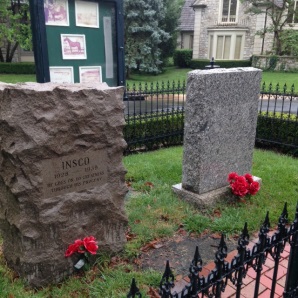What are Surplus Reserves?
This is a very common question and the idea of “Percent Funded” is still confusing to many associations. So before we answer the question, let’s define what it means to be 100% funded.
To be 100% funded means as of a particular point in time the Association has Reserve funds on hand exactly equal to the deterioration of its Reserve components. It does NOT mean that the Association has 100% of the funds needed to repair and replace all the components in the Reserve Study.
Here’s a simple example – Assume that there is just one reserve component with a Useful Life of 10 years and a Replacement Cost of $100,000. After three years of the ten-year life have elapsed, the asset has deteriorated 3/10ths of its current cost (3/10 x $100,000 = $30,000). If the Association has followed the $10,000/year funding recommendation and has $30,000 set aside at the 3-year point, the Association is 100% funded. Do they have all the money they need to replace this $100,000 item? No, but they are “on track”.
Now let’s say in year three that the same Association has $45,000 set aside instead of the required $30,000. This computes to the Association being 150% funded ($45,000 divided by $30,000). Does the Association have the total replacement cost set aside? No, there is still a $55,000 project shortfall, but the Association’s reserve fund is in a “surplus reserves” situation.
Surplus Reserves & National Reserve Study Standards
The Reserve Study provider takes into account the financial position of the Association as of the date of the report. According to National Reserve Study Standards, a Reserve Funding Plan is developed that meets the following four Reserve Funding Principles:
- Adequate cash to replace the components at their scheduled replacement date
- Budget Stability for the Association
- An even Distribution of reserve contributions among (current and future) homeowners, and
- Fiscally Responsible behavior of the board and management with respect to their inevitable reserve obligations
In the second example, the Reserve Study provider would take the surplus reserves into account by dividing the project shortfall of $55,000 over the seven remaining years of useful life. The annual funding recommendation would be reduced to $7,857/year from the $10,000/year recommended in the first example. So, to answer the question, “Yes, the board should continue to fund reserves even when the Association is more than 100% funded”.
Admittedly, this is an unrealistically simple example. In an actual Reserve Study, each year the funding plan should be adjusted to meet the four Reserve Funding Principles stated above. Some years this means increasing the reserve contributions, some years this means decreasing the reserve contributions. Adequate funds are not collected, the budget will not be stable from year to year, and owners will not share equally in their reserve obligations if reserve contributions are temporarily stopped. Unless the Reserve Study indicates that no additional reserve funding is necessary, the Association should fund their reserves at the level recommended by the Reserve Study.
Not Following the Recommend Funding Plan
The next question usually asked is “What if we do not fund reserves in accordance with the recommendations of the Reserve Study Funding Plan?” While it is true that there is no law that requires adequate funding of reserves, we refer the Association to the three factors that influence prudent common industry practice on a national level and suggest that this is a legal question that the Board may want to discuss with the Association’s attorney.

